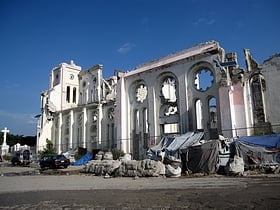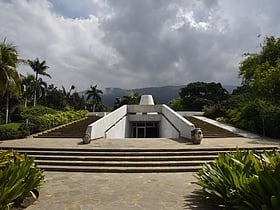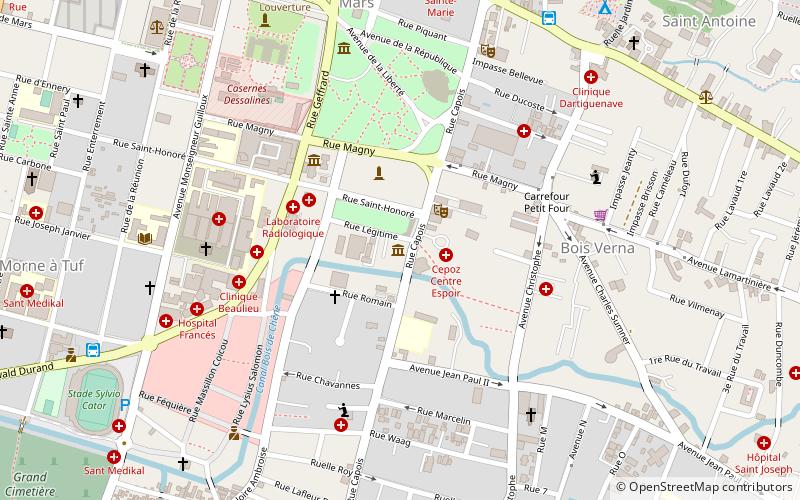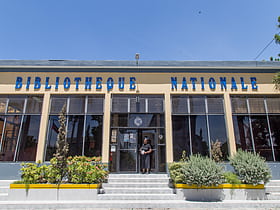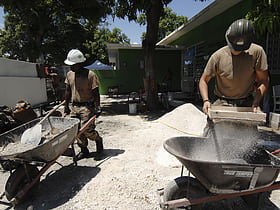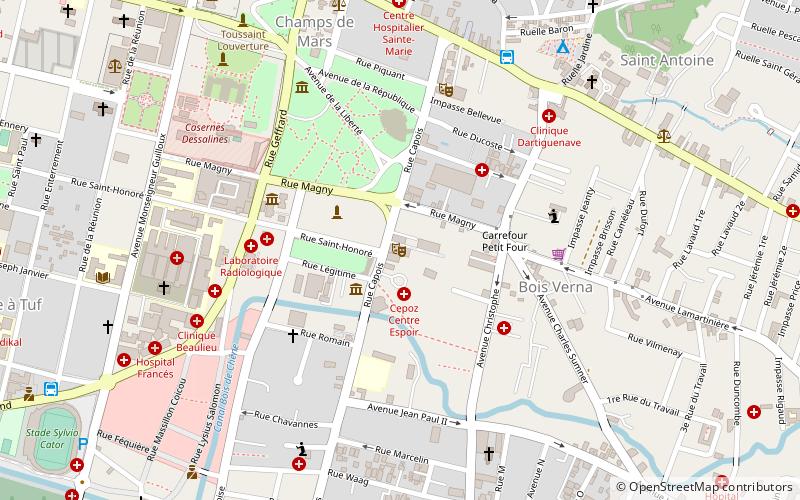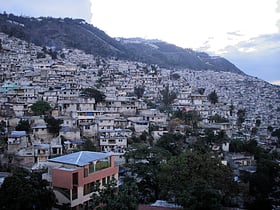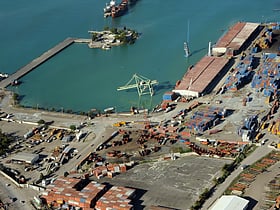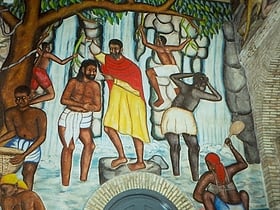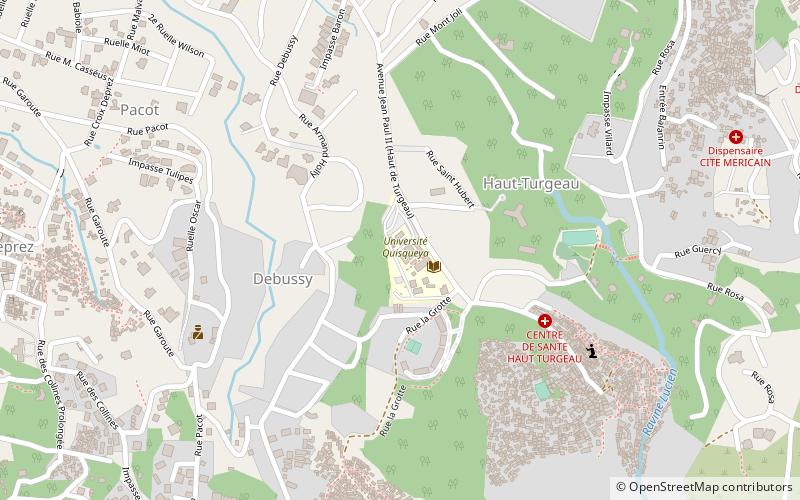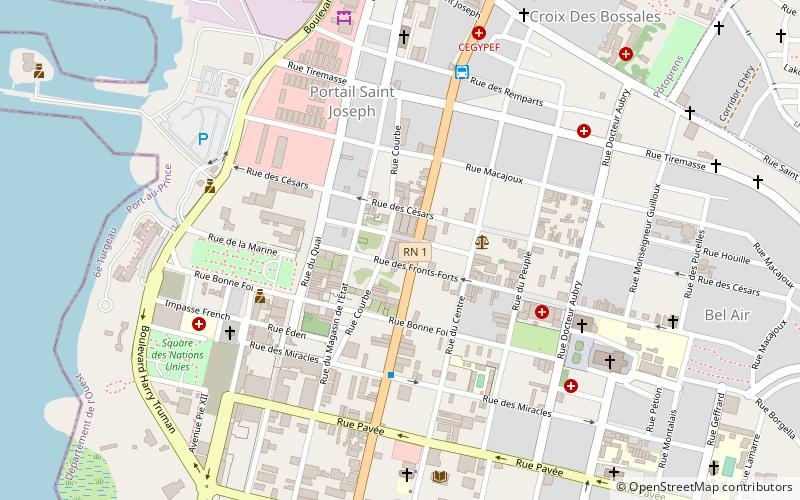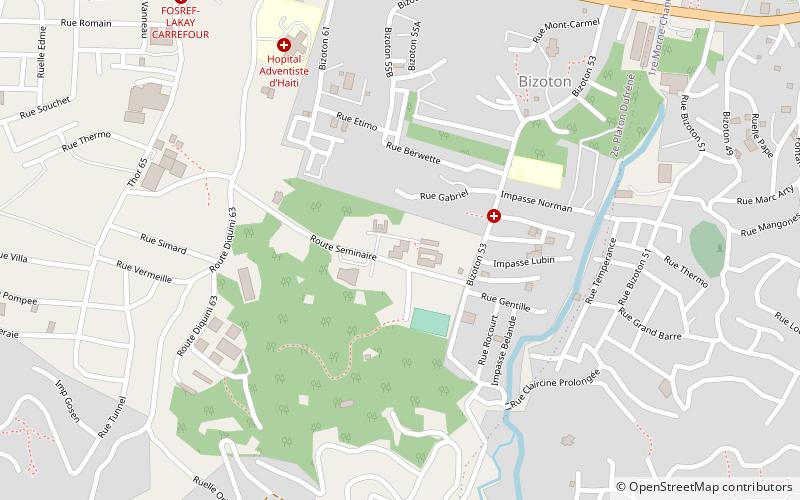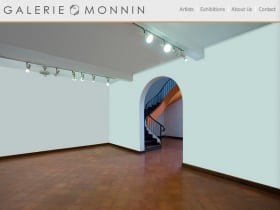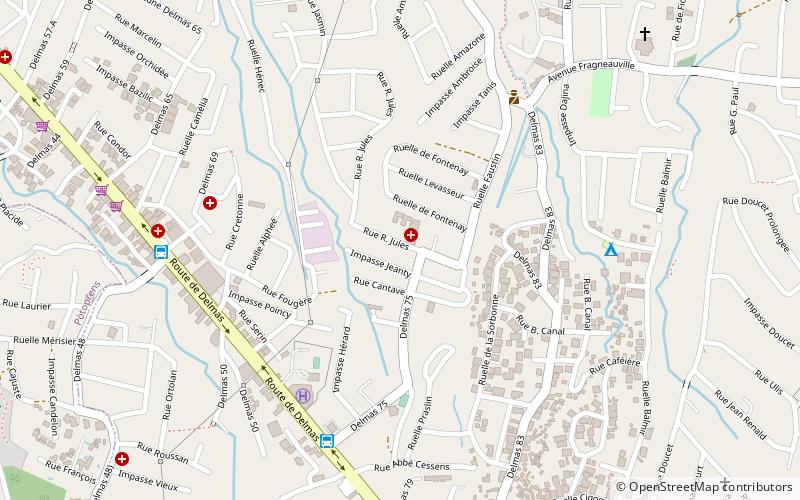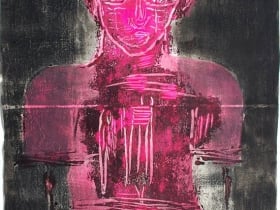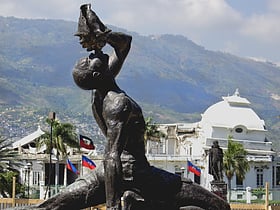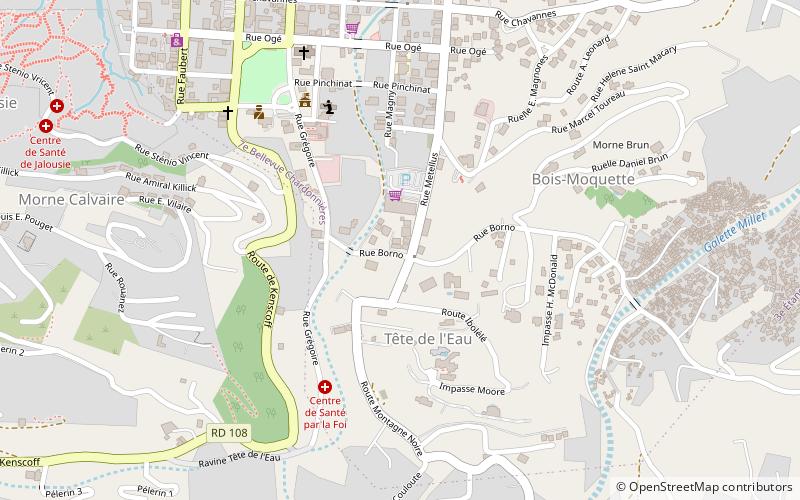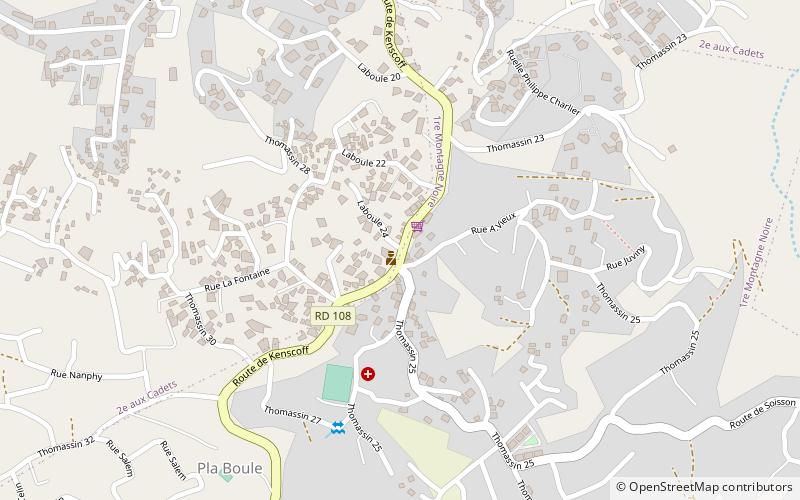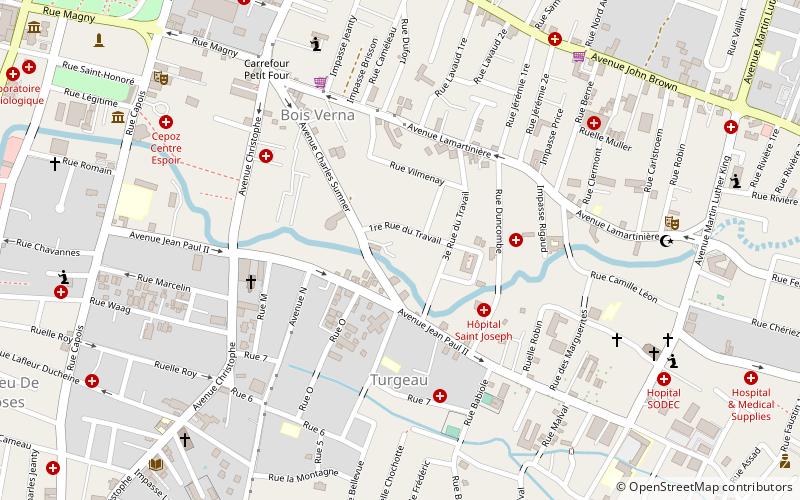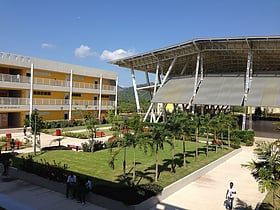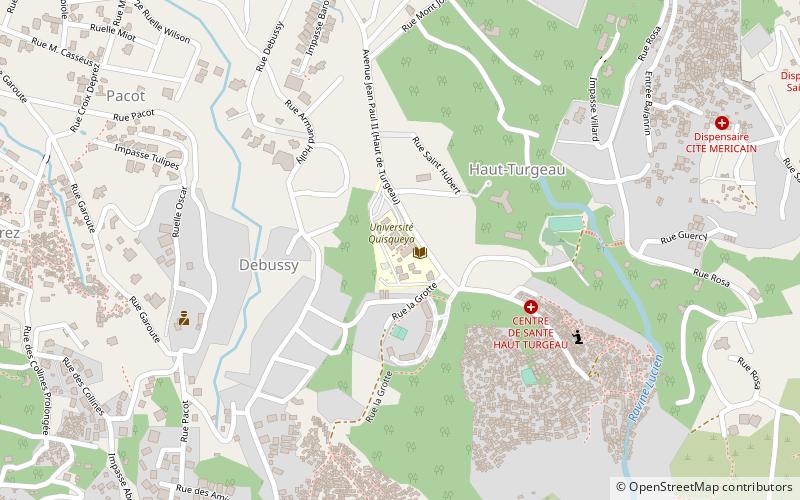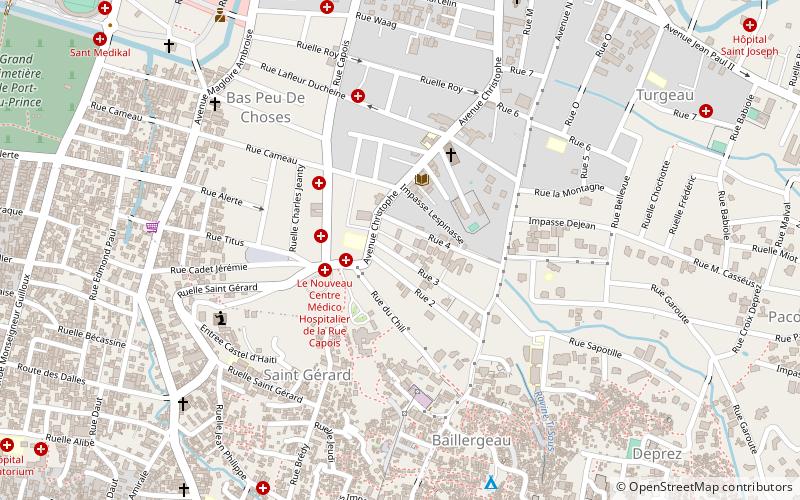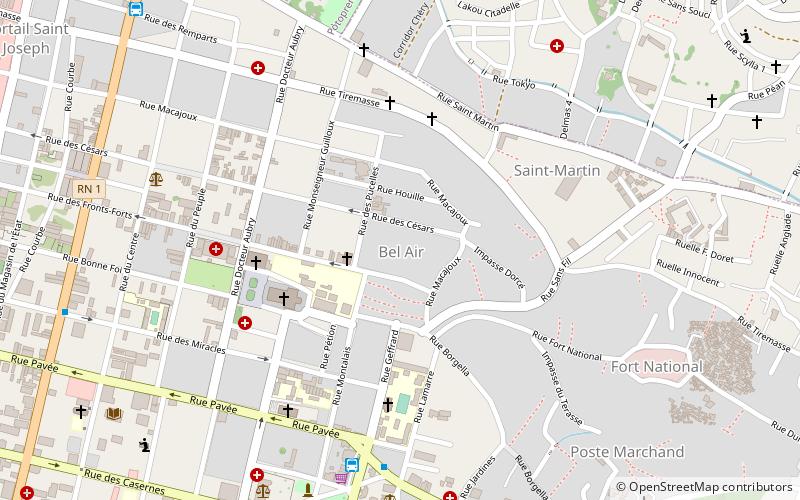Port-au-Prince: Sightseeing
Places and attractions in the Sightseeing category
Cathedral of Our Lady of the Assumption
The Cathedral of Our Lady of the Assumption, once an iconic landmark in the heart of Port-au-Prince, Haiti, is a church steeped in history and tragedy. Originally completed in 1914, this Roman Catholic cathedral exemplified the grandeur and spiritual significance of...
Mupanah
Mupanah, officially known as the Musée du Panthéon National Haïtien, stands as a beacon of culture and history in the vibrant city of Port-au-Prince, Haiti. This museum, dedicated to the heroes of the independence of Haiti and the Haitian history and culture, is an...
National Museum of Art
The National Museum of Art, located in the vibrant heart of Port-au-Prince, Haiti, stands as a bastion of Haitian culture and heritage. This museum is an essential repository of Haitian art, offering a deep dive into the country's rich artistic history and contemporary...
National Library of Haiti
The National Library of Haiti, nestled in the heart of Port-au-Prince, stands as a beacon of knowledge and cultural heritage in this vibrant Caribbean nation. Established in 1939, it has been a crucial repository for the preservation and dissemination of Haitian...
Croix-des-Bouquets
Croix-des-Bouquets is a commune located in the northeastern outskirts of Port-au-Prince, the capital city of Haiti. Renowned for its rich cultural heritage, this area is particularly famous for its vibrant arts scene, especially the unique steelwork art that has put it...
Kenscoff
Perched in the mountains of Haiti, a mere 10 kilometers southeast of the bustling capital city of Port-au-Prince, lies the serene and picturesque town of Kenscoff. This locale, renowned for its cooler climate and lush landscapes, offers a stark contrast to the heat...
Rex Theater
In the heart of Port-au-Prince, Haiti, stands the Rex Theater, a cultural beacon with a storied past. This historic theatre, located in the bustling downtown area, was once the crown jewel of the city's performing arts scene, known for its grandeur and the caliber of...
Supreme Court of Haiti
The Supreme Court of Haiti, known as the Cour de Cassation in French, stands as the highest judicial authority in the Caribbean nation of Haiti. Located in the capital city of Port-au-Prince, this pivotal institution is the final arbiter of legal disputes and the...
Pétion-Ville
Nestled in the hills of Port-au-Prince, Pétion-Ville stands as a vibrant and affluent area within Haiti's capital city. Renowned for its bustling streets, upscale boutiques, and a plethora of dining establishments, Pétion-Ville offers a contrasting experience to the...
Port international de Port-au-Prince
The Port international de Port-au-Prince is a vital gateway for the vibrant city of Port-au-Prince, Haiti. As the principal seaport of the nation, it serves as a critical hub for the import and export of goods, playing an indispensable role in the country's economy.
Port-au-Prince Haiti Temple
The Port-au-Prince Haiti Temple is a temple of The Church of Jesus Christ of Latter-day Saints in the Port-au-Prince suburb of Pétionville, Haiti. It is located adjacent to an existing meetinghouse at the intersection of Route de Frères and Impasse Saint-Marc.
Holy Trinity Cathedral
The Holy Trinity Cathedral, Port-au-Prince was the main cathedral in the Episcopal Diocese of Haiti. The building was located in downtown Port-au-Prince at the corner of Ave. Mgr. Guilloux & Rue Pavée.
National Museum of Haiti
The National Museum of Haiti in Port-au-Prince, Haiti, was completed in 1938. It is located at Route Nationale No. 1 in the neighborhood of Montrouis.
Marché en Fer
Marché en Fer or Marché de Fer also known as the Marché Hyppolite and the Marché Vallières is a public market in Haiti’s capital, Port‑au‑Prince. It was damaged by fire in 2008 and destroyed in the 2010 Haiti earthquake, but was restored. In February 2018 it burned again, with one of the two halls being destroyed.
Adventist University of Haiti
Adventist University of Haiti called in French:Université Adventiste d'Haïti is situated some five miles southwest of Port-au-Prince, in the Carrefour neighborhood.
National Archives of Haiti
The National Archives of Haiti were first established in 1860. The archives hold the records of the office of the President and most government ministries. They are currently participating in the Digital Library of the Caribbean's Protecting Haitian Patrimony Initiative.
Le Marron Inconnu
Le Marron Inconnu de Port au prince, shortened as Le Marron Inconnu, also called Le Nègre Marron or Nèg Mawon, is a bronze statue of a runaway slave, better known as a maroon, standing in the center of Port-au-Prince, Haiti.
Expressions Art Gallery
Expressions Galerie D'Art is located in Port-au-Prince, Haiti. It is one of Haiti's largest galleries, with an extensive collection of haitian art works. It was founded 31 years ago with a collection of contemporary Haitian art. The gallery later relocated to larger new premises down the hill of Montagne Noire in Pétion-Ville.
Thomassin
Thomassin is a neighborhood on the mountainside south of Pétion-Ville, Haiti. Many upper-class citizens reside in the area.
Bois Verna
Bois Verna is a neighborhood of Port-au-Prince, Haiti. It has one of the largest concentration of the historic Haitian gingerbread style houses present.
State University of Haiti
The State University of Haiti is one of Haiti's most prestigious institutions of higher education. It is located in Port-au-Prince. Its origins date to the 1820s, when colleges of medicine and law were established. In 1942, the various faculties merged into the University of Haiti.
Quisqueya University
Quisqueya University founded in 1988, is a private Haitian university located in Port-au-Prince. The coordinator of the university's establishment and its first rector, from 1990 to 1995, was Jacques-Édouard Alexis who became Prime Minister of Haiti in 1999.
Université Notre Dame d'Haïti
The Université Notre Dame d'Haïti is a Roman Catholic university located in Port-au-Prince, Haïti. It was founded in 1995 and is organized in five faculties.
Bel Air
Bel Air is a neighborhood of Port-au-Prince, Haiti. It is a slum area of the city and suffers from poverty. Crime is widespread, and kidnappings and killings have created panic among the local population. The neighborhood is also noted for housing a community of artists and craftsmen who produce inspired by Haitian Vodou, such as flags.
Map

